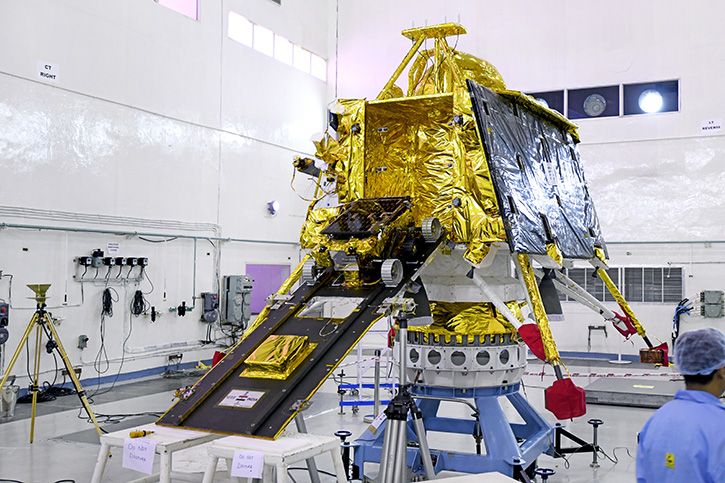Here’s Your First Look At India’s Chandrayaan 2 Moon Rover Named Pragyan

In a few days, India will launch its second mission to the moon – the Chandrayaan 2. A more complex mission than the Chandrayaan 1, it will be launched on ISRO’s biggest rocket, the GSLV Mk-III on 15 July 2019.
The Chandrayaan-2 mission is made up of two major parts – an orbiter which will enter orbit around the moon and a lander which will land near the south pole of the moon. The lander, named Vikram after Vikram Sarabhai, will be operational on the lunar surface for about 14 days and is capable of communicating with the orbiter and the rover.
The rover, named Pragyan, is a six-wheeled vehicle that is capable of covering about 500 metres. In the image below you can see the rover on the ramp of the lander. Once the lander makes a soft landing on the moon, the ramp will lower and the rover will roll down to the lunar surface. The solar panel on top of the rover will fold open and provide it with the required power.

On-board the Pragyan are two experiments:
The rover appears to have two cameras up front to ‘see’ where it’s going and wheels mounted on what looks like a suspension system designed to articulate over rocks and boulders. The suspension resembles the rocker-bogie suspension that NASA uses on its Mars rovers like the Curiosity. The wheels look like they’re made out of metal and have teeth for added traction on dusty surface.
When the Chandrayaan 2 is launched from Sriharikota on 15 June, it will first be parked in orbit around the earth. The orbit will be raised using a series of manoeuvres so that it can be catapulted towards the moon. Once around the moon, Chandrayaan 2 will enter a circular orbit 100 km above the lunar surface.
If all goes to plan, on 6 September, the lander will separate from the orbiter and make a controlled soft landing near the south pole of the moon. The landing site has been identified with some goals in mind.
Previously, China has landed the Change spacecraft on the far side of the moon. Soviets also landed rovers on the moon with the Luna missions.
Hopefully, ISRO will be able to emulate the success of the previous Chandrayaan and Mangalyaan missions.
Source>>
Source>>



No comments:
Post a Comment